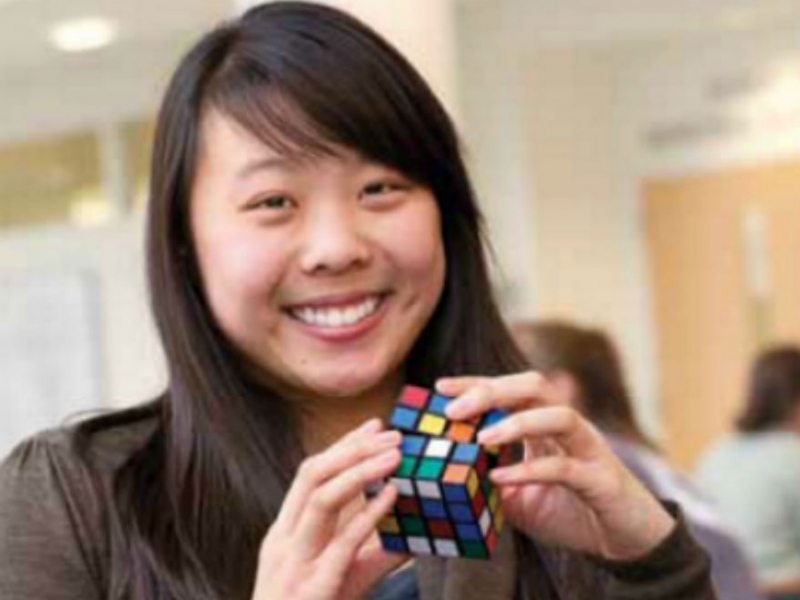Cubic Feat

Watching Stephanie Chow deftly solve a Rubik's cube is akin to watching a hummingbird: Like the speed of the latter’s wings, focusing on her actual movements is nearly impossible. A first-year medical student, Chow competes nationally in Rubik’s cube competitions—called “speedcubing”—and once was ranked the fastest female Square-1 solver in the world. (The Square-1 is a variation on the standard Rubik’s cube.)
WHAT BROUGHT YOU TO TEMPLE?
The Medical School has great facilities, awesome classmates and wonderful faculty. Philadelphia also is a nice city. I’ve always wanted to live in the city.
HAVE YOU CHOSEN A MEDICAL SPECIALTY YET?
Not really, but I have ideas. I am thinking about oncology. The subject fascinates me. But really, it’s a bit early to decide.
THE RUBIK’S CUBE WAS FIRST RELEASED IN 1980. WHEN AND HOW DID YOU FIRST PICK IT UP?
In 2006, my friend—the former world-record-holder for speedcubing—gave me a cube for Christmas. I didn't improve my time until I attended UC Berkeley. There is an amazing Rubik’s cube community there, where we have a club, hold competitions and teach classes about how to solve the Rubik’s cube.
HOW LONG DID IT TAKE YOU TO LEARN HOW TO SOLVE IT?
A friend taught me, and I was able to solve it by the end of the day.
DO YOUR FRIENDS MAKE YOU SOLVE IT AT PARTIES?
Absolutely. I don’t really carry my cube around, but when I do, it’s a pretty big hit.
HOW DO YOUR INTEREST IN CUBING AND YOUR INTEREST IN MEDICINE DOVETAIL?
One thing we are learning about right now is how the embryo develops. During that stage of the life cycle, there are many folds of tissue and new membranes developing. It’s very much like picturing what happens to each part of the cube when I use a specific algorithm to solve it.
CAN YOU GIVE BEGINNERS SOME TIPS ON HOW TO SOLVE THE RUBIK’S CUBE?
The centers never move, so you are basically rotating all the faces around an axis. You solve the cube as you would make a three-layer cake. You start with the foundation, and then you build your way up from there. That is the simplest way I solve the cube, but there are many other methods to it. I'm only fast because I skip steps. For example, I construct the first two layers of the “cake” at a time.